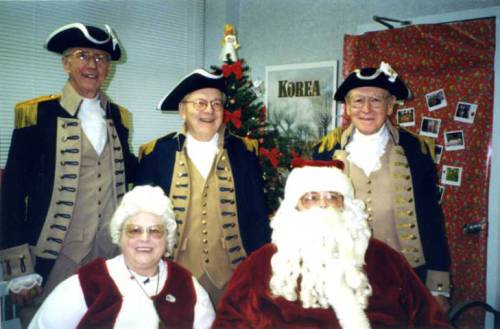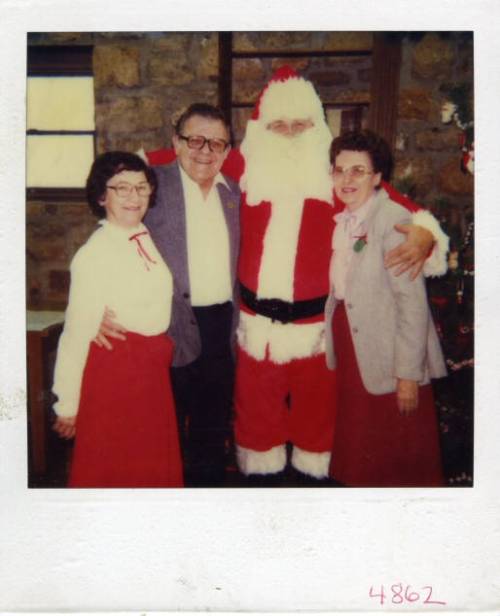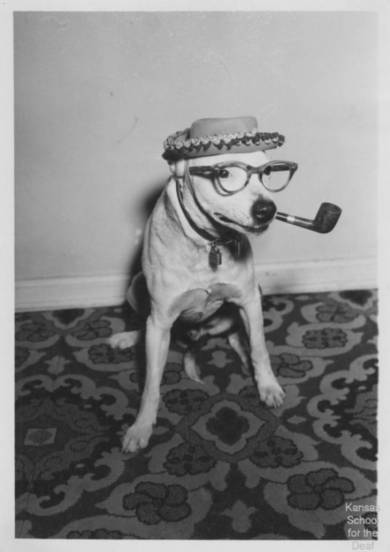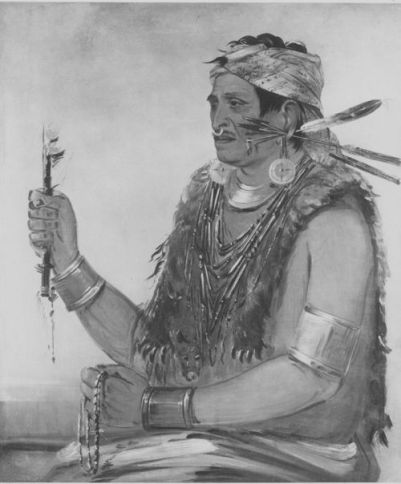For nearly 70 years, Starlight Theatre has entertained people from all over the country. Currently located in Kansas City, Missouri (in the heart of Swope Park), Starlight’s official history began as early as the 1920s when funding began to take shape for an outdoor theatre. The Kansas City Federation of Music Clubs oversaw the fundraising efforts and in 1950, the very first production was “Thrills of the Century” – a historic revue that coincided with the city’s Centennial Celebration. The following year, The Starlight Theatre Association took control over the daily operations of the now completed outdoor venue. To this day, Starlight Theatre is city owned facility that is operated jointly with Kansas City Parks and Recreation. It is currently the largest and oldest performing arts organization in Kansas City.

Starlight Theatre ca 1951. Photo courtesy of Starlight Theatre.
As a 501c3 (non-profit) organization, Starlight relies heavily on volunteers in terms of daily operations (ticketing, tending to the various horticulture, and assisting with auditions) and promotions for events (tours, guest information desk). These giving volunteers are now considered to be ‘ambassadors’ and have grown to nearly 200 people strong and counting.
Last year, during the touring production of Love Never Dies, Starlight took the time to honor one of their longstanding ambassadors for her nearly 50 years of service. Longtime volunteer and Johnson County resident Jan Morevitska was given the surprise of a lifetime when she was recognized with a video tribute and a very special mention in Starlight’s Star Notes (their very special version of a Playbill).

Jan’s tribute in 2018. Jan is pictured with her husband Lee Morevitska; Photo courtesy of Barb Schulte and Starlight Theatre
This was not Jan’s first recognition for her decades of service to the theatre industry. Jan and her husband Lee were previously recognized in 2011 by the National Broadway League with a ‘Star of Touring Broadway Award’ for their (at the time) over 40 years of service. This super couple became affectionately known as ‘Mr. and Mrs. Starlight’ after decades of service to every area of Starlight Theatre. Highlights of their service include: assisting with cast parties and picnics, hosting backstage tours of the theatre and the grounds, ushering on show nights, promoting the season in the local KC Metro area, and archiving Starlight artifacts for posterity.

Jan and Lee at a Starlight Gala in 2011.. Photo courtesy of Barb Schulte and Starlight Theatre
For Jan, her love of Starlight started very early, while she and Lee were high school sweethearts at Central High School in Kansas City, Missouri. As a high school student, Jan could hear the sweet sounds of Starlight from her front porch. In 1956, the theatre introduced half price ‘first-nighter’ tickets to metro area students. Lee and Jan were quick to grab Orchestra seats for several opening shows that season for only $5 a ticket. The couple hasn’t looked back since then; they became hooked as Starlight regulars, attending a number of shows every year.
In 1969, Jan was invited to join the Starlight Theatre Women’s Committee by one of her neighbors. This group, formed in 1959 was established to promote civic participation and interest for Starlight. During the initial years, members were only permitted to join by invitation only and by 1984, there were over fifty women that conducted backstage tours, hosted cast parties (Jan was often responsible for obtaining the food in her early years), and sold season ticket packages at various locations in the city (including Ward Parkway Shopping Center and Metcalf South Mall). All members were required to be season ticket holders as part of their contribution to Starlight. For Jan and Lee, it was never a difficult decision to become longstanding theatre patrons and supporters of the theatre. In 1993, the committee was restructured and now known as Starlight Theatre Ambassadors. Membership was now extended to men and was no longer offered by invitation only. Lee was quick to become an Ambassador, though he had assisted with small projects before it became official. Jan and Lee work as a pair to show off Starlight’s backstage area during the Thursday night tours, where guests can see the stage, lighting, and sound areas. The backstage tours (performed on show nights) continue to draw in curious onlookers. As of 2019, there are over 200 Starlight Ambassadors that keep Starlight shining through their volunteer service and dedication. Their duties have since expanded to include daytime tours during the summer, which continue to be one of Jan’s favorite volunteer activities.

A program cover from Jan’s first year volunteering with the Women’s Committee. Photo courtesy of Barb Schulte and Starlight Theatre

1984 Women’s Committee (Jan is back
row center). Photo courtesy of Barb Schulte
and Starlight Theatre
Jan and Lee continue to be beloved by Starlight. Jan has been the recipient of the ‘Ambassador of the Year’ award (assigned to her by her fellow volunteers) a total of four times – most recently last year in 2018. The Morevitska’s even have a special room dedicated to them at the theatre. The Morevitska room, established in the mid-2000s, serves as a break or visiting room for the Ambassadors. Here volunteers check in and out of the building and relax during their shift. Last year, the room received a well-earned renovation that included new furniture, paint, and a wall mural for the room’s namesakes. This year, Starlight is placing a bronze plaque inside of Gate 3 to commemorate Jan’s 50 years of service.

Jan and Lee celebrate their years of service in 2015. Photo courtesy of Barb Schulte and Starlight
Theatre
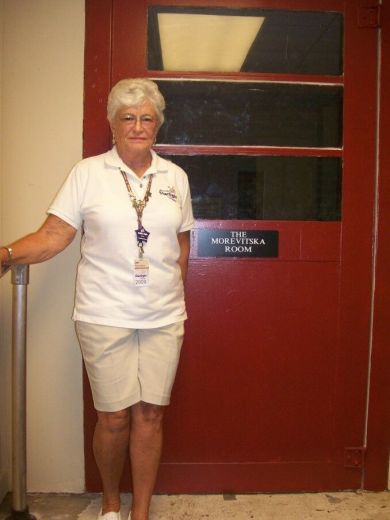
Jan poses outside of the famed Morevitska room. Photo courtesy of Barb Schulte and Starlight
Theatre
Starlight’s history has changed over the years while the Morevitska’s have been volunteering and as Vice President of Education and Outreach, Barb Schulte is well versed in Starlight’s strong history. In the 1950s-60s, there were roughly 8-10 shows at Starlight every summer, and they were all ‘Starlight produced shows’ versus touring productions. The 1970s saw production costs starting to rise for the theatre, and variety shows were becoming more popular, leading to celebrities coming to Starlight to headline a new show. The 1970s also saw the occasional regional and national tour coming to Starlight. Starlight currently maintains a balance between booking tours and in-house productions. Rich Baker (President and CEO of Starlight Theatre) keeps a steady pulse on what shows are currently touring, planning a tour, and what shows have not been on Broadway yet. When tours come to Starlight, they are typically in the back half of their run as most tours tend to begin in the fall season. In recent years, Starlight produces at least one per season.
When shows are locally produced by Starlight, there is an excellent chance for local artists to return to Kansas City or make their big professional debut on the Starlight stage. Kansas City resident Jessica Alcorn and stylist at Indigo Rose Hair Salon has the fondest memories of Starlight’s production of Hairspray. In 2006, a rainy visit to Starlight still held amazing memories for Jessica and her mother, Cathy. Starlight’s policy is on weather is that the show must go on in ‘rain or shine’. The outdoor stage is now enclosed (since 2000) to protect the actors while they perform. There are a variety of places for attendees to stop at in order to get out of the rain, including pergolas (arbors that provide an open roof structure) above the walkways for guests to stand under and still get a view of the stage. Jessica and her mother stayed through the rain and were enticed to come back the following night and watch from the terrace in the back. When the final number came on the stage, Jessica was anxious to sit up front – there was someone performing on stage who looked just like her (the plus-sized and enthusiastic character Tracy Turnblad). She left that night in 2006 wishing that she could perform on the stage, and got exactly what she wanted in 2018 when she headlined Starlight’s production of Hairspray, in the very same role that she fell in love with over ten years ago. It was a grueling but fulfilling process for Jessica and the other performers who went through several rounds of auditions and callbacks before being told that they had a role in the production. In-house shows are put together in roughly two weeks’ time, which means the cast learns several scenes and dance moves each day. Alcorn’s role was recognized by Broadway World as ‘Best Professional Actress’ (Broadway World Kansas City Awards) For Jessica and her fellow actors, it’s all worth it in the end when the lights come up at Starlight Theatre.

Jessica Alcorn as Tracy Turnblad in Starlight Theatre’s 2018 production of Hairspray. Photo courtesy of Jessica and Cathy Alcorn
One thing that does not change about Starlight is the joy and appreciation that patrons (and local actors and actresses) have for the playhouse. For Jessica, performing on the Starlight stage was a lifelong dream that came true. Her fond memories of coming with her family during the summer – they rode in a limo! – made Starlight a seasonal memory that impacted her personally and professionally. For Jan, the appeal of Starlight lies in wide variety and ability to appeal to every age group. After over 50 years of performances and variety show specials, Jan cannot pin down a specific favorite. During our interview, she was able to joke that her favorite show was ‘the one she was watching right now’. The Wizard of Oz, always holds a very special place in Jan’s heart, especially when Starlight is able to produce the show (it was the 2nd Broadway show of the 2019 line-up).
Part of Starlight’s celebration of nearly 70 years of entertaining the public includes the new addition of a Starlight Ovation Museum, which will be located in the spot traditionally held by the Ovation Gift Shop. Barb Schulte and the Morevitska’s, along with dozens of other individuals have been busily preparing the space for a June 10 opening (coinciding with the start of The Wizard of Oz’s run). The museum will share the story of Starlight with visitors through artifacts (programs, posters, photographs, props, and memorabilia) that will shed light on milestones, celebrations, and moments of remembrance. One of Starlight’s goals going forward is to build up their library of artifacts, which now currently include an original Broadway piano and telephone switchboard that were utilized during Starlight’s inception.
The memories of Starlight continue to endure for the staff, volunteers, company of actors, and visitors that grace the area each summer, all of whom are creating a Starlight memory of their very own.
-Heather McCartin, Johnson County Library







